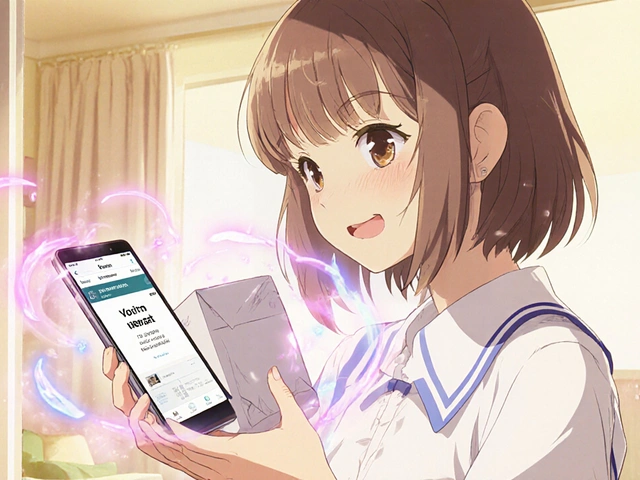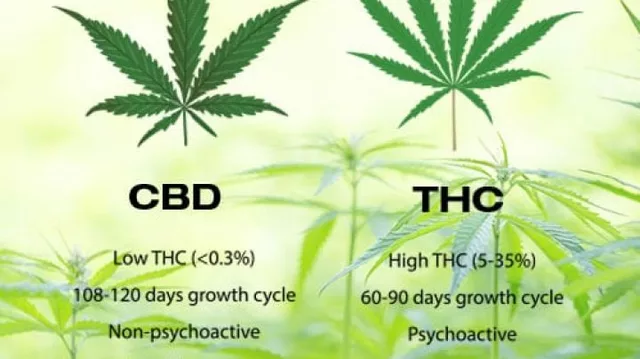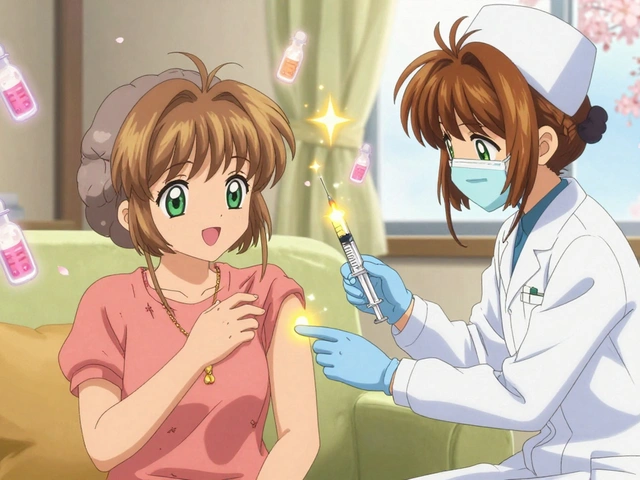For years, buying generic medication meant driving to a pharmacy, waiting in line, and hoping your insurance covered it-only to get hit with a surprise copay. Now, you can order your blood pressure pills, antidepressants, or birth control directly from your phone, often for less than $5 a month. This isn’t science fiction. It’s happening right now, and it’s changing how millions of Americans get their meds.
What Exactly Is a Direct-to-Consumer Generic Pharmacy?
A direct-to-consumer (DTC) generic pharmacy cuts out the middlemen. No more pharmacy benefit managers (PBMs), no more wholesalers, no more retail chains acting as gatekeepers. Instead, companies like Ro, Hims & Hers, and Honeybee Health deliver generic drugs straight to your door. You pay a flat cash price-no insurance required-and get your prescription filled within days, sometimes hours.
This isn’t just about convenience. It’s about transparency. At a traditional pharmacy, you might pay $120 for a 30-day supply of generic lisinopril. The same drug, ordered through Ro or Blink Health, costs $12. Why? Because those middlemen used to take a cut-sometimes over 80% of the list price-without ever touching the medicine. DTC models strip that out. You’re paying the real cost of the drug, not the inflated price padded by layers of bureaucracy.
How These Platforms Work
Here’s how it actually works in practice:
- You visit a DTC platform like Honeybee Health or Ro and pick your medication.
- You answer a short health questionnaire. No doctor’s visit needed-unless you’re getting something new.
- If you’re refilling a prescription you already have, they verify it with your doctor (or use a licensed telehealth provider if you need a new one).
- They e-prescribe it to their own pharmacy, which is licensed in all 50 states.
- Your meds ship in plain packaging, usually within 2-4 business days.
It’s simple. No phone calls. No faxing. No standing in line. And because they handle everything in-house, they can offer subscription plans. Get your monthly dose automatically shipped. Skip the refill reminder. Save time and money.
Who’s Running These Services?
There are two main types of DTC generic pharmacies today.
The first group is made up of digital health startups: Ro, Hims & Hers, and Honeybee Health. These companies started by selling things like hair loss treatments and erectile dysfunction drugs, but they’ve expanded into chronic condition meds-blood pressure, cholesterol, thyroid, diabetes. Ro alone processed over 2.1 million prescription orders in Q1 2025, mostly generics.
The second group is big pharmaceutical companies-LillyDirect, PfizerForAll, and NovoCare. These are brand-name players, but they’re starting to offer generics too. Why? Because they want to control the patient relationship. They’re not just selling pills. They’re collecting data on adherence, side effects, and usage patterns. That’s something PBMs never had access to.
And here’s the twist: the brand-name DTC platforms often use the same delivery infrastructure as the startups. The difference? The pharma companies are selling their own drugs at net prices-sometimes cheaper than generics-because they’re skipping the PBM rebate game entirely.
Why This Is a Big Deal for Patients
For people on high-deductible plans, or those without insurance, this is life-changing.
Take someone on generic sertraline for depression. At CVS, it might cost $65 with insurance, $110 without. On Ro, it’s $10. Same drug. Same manufacturer. Same FDA approval. Just no middlemen.
A Drug Channels survey from May 2025 found that 73% of patients using DTC pharmacies for chronic conditions reported better adherence. Why? Because cost is the #1 reason people skip doses. When you can afford your meds, you take them. Simple as that.
And the savings add up fast. One Reddit user, ‘MedSavvy2025’, reported saving $417.50 a year on their generic blood pressure med. Another saved $120 on their antidepressant through Blink Health. These aren’t outliers-they’re becoming the norm.
The Downsides and Risks
It’s not perfect.
First, availability. DTC pharmacies don’t carry everything. If you need a rare generic or a complex combo pill, you might still have to go to a traditional pharmacy. Most platforms focus on 50-100 high-demand medications. That’s great for common conditions, not so great for niche ones.
Second, delivery times. You won’t get your meds the same day like at your local Walgreens. Most platforms take 2-5 days. For urgent needs, that’s a problem.
Third, pharmacist access. Traditional pharmacies have pharmacists on-site who can catch drug interactions, warn about side effects, or adjust dosages. DTC platforms offer phone or chat support, but it’s not the same. Drug Topics reported 17 cases in 2025 where potential interactions might have been caught by a local pharmacist. That’s a real concern for people on multiple medications.
And then there’s insurance. Most DTC services are cash-pay only. If you have insurance, you can’t use it. That’s fine if you’re paying out-of-pocket, but if your plan has a low copay, you might be better off sticking with your current pharmacy.
Regulatory Hurdles Are Real
Running a DTC pharmacy isn’t just about building an app. It’s a legal minefield.
To operate legally, a company needs a pharmacy license in all 50 states and Washington D.C. That process takes 14-18 months and costs over $2.3 million in legal and compliance fees. Only a handful of companies have done it.
They also have to comply with HIPAA, FDA shipping rules, and state-specific pharmacy laws. One misstep-and they could lose their license in multiple states.
And now, regulators are watching. The Department of Justice opened investigations into DTC programs in September 2025, looking for potential anti-kickback violations. Are companies offering discounts in exchange for patient data? Are they steering people away from insurance? No major actions yet, but the risk is growing.

What’s Next? Hybrid Models Are Winning
The idea that DTC pharmacies will replace traditional ones? That’s not happening.
Instead, we’re seeing hybrid models. Big pharma companies like Pfizer and Lilly are using DTC to reach patients directly, but they’re still selling through pharmacies too. Ro and Hims & Hers are partnering with insurers to offer discounted cash prices as part of employer wellness plans.
And here’s the quiet revolution: DTC platforms are starting to integrate with electronic health records (EHRs). That means your doctor can see your refill history, your adherence rates, and even your side effects-all in real time. That’s data PBMs never had. And it’s helping doctors make better decisions.
By 2026, analysts predict 83% of pharmaceutical companies will use hybrid distribution. DTC won’t kill the pharmacy. It will force it to evolve.
Should You Use a DTC Generic Pharmacy?
If you’re paying cash for generics, yes. Especially if you’re on a chronic medication you take every day.
Here’s a quick checklist:
- Do you pay out-of-pocket for meds? → DTC is likely cheaper.
- Do you take one or two regular medications? → Perfect fit.
- Do you need immediate access? → Stick with your local pharmacy.
- Are you on 5+ medications? → Talk to your pharmacist first.
- Do you value human interaction with your care? → Consider a hybrid approach: use DTC for refills, keep your local pharmacy for consultations.
The bottom line? You have more power now. You can compare prices. You can avoid hidden fees. You can take control. And that’s not just good for your wallet-it’s good for your health.
Are DTC generic pharmacies safe?
Yes, if they’re licensed and regulated. Reputable platforms like Ro, Honeybee Health, and LillyDirect are fully licensed in all 50 states, use FDA-approved medications, and follow strict shipping and storage guidelines. Their pharmacies are inspected and audited regularly. The key is to stick with well-known, established companies-not random websites selling pills from overseas.
Can I use insurance with DTC pharmacies?
Generally, no. DTC pharmacies operate on a cash-pay model to avoid the complex rebate system used by PBMs. If you have insurance with a low copay, you might pay less through your regular pharmacy. But if you’re uninsured or have a high deductible, DTC often saves you money. Some employers are starting to partner with DTC platforms to offer subsidized cash prices as part of health plans.
How long does delivery take?
Most DTC pharmacies ship within 1-2 business days after your prescription is approved. Delivery usually takes 2-4 days via standard shipping. Some offer expedited options for an extra fee. This is slower than walking into a local pharmacy, but faster than waiting for a PBM to process a claim.
What if I have questions about my medication?
Most platforms offer 24/7 access to licensed pharmacists via phone or chat. Ro and Honeybee Health staff about one pharmacist for every 5,000 active patients. You can ask about side effects, interactions, or how to take your meds. It’s not the same as talking to your local pharmacist in person, but it’s better than nothing. For complex cases, they’ll recommend you consult your doctor.
Are generic drugs from DTC pharmacies the same as brand-name ones?
Yes. Generic drugs must meet the same FDA standards as brand-name drugs. They contain the same active ingredients, work the same way, and are held to the same safety and quality standards. The only differences are in inactive ingredients (like fillers) and packaging. The FDA requires generics to be bioequivalent-meaning they deliver the same amount of medicine into your bloodstream as the brand version.
Why are DTC generics so much cheaper?
Because they cut out the middlemen. Traditional pharmacies rely on a system where manufacturers charge a high list price, PBMs negotiate rebates, and pharmacies get paid through those rebates-not the actual drug cost. DTC companies buy generics directly from manufacturers at low net prices and pass the savings to you. No rebates, no markups, no hidden fees. You’re paying the real cost.
Final Thoughts
The old system was broken. Patients paid more. Doctors didn’t know if patients took their meds. PBMs made billions off opacity. DTC generic pharmacies aren’t a miracle cure, but they’re the most honest shift in drug distribution in decades.
If you’re tired of surprise bills, delayed refills, and confusing pricing, try a DTC platform. Start with one medication. Compare the price. See how fast it arrives. Talk to their pharmacist. If it works, switch the rest. You’re not just saving money-you’re taking back control of your health.








Brian Bell November 14, 2025
This is wild. I’ve been getting my lisinopril from Ro for a year now. $12 a month. No insurance hassle. Just a box showing up like my Amazon order. 🤯
Ashley Durance November 16, 2025
Let’s be real. This isn’t ‘saving patients’-it’s just another corporate loophole. They’re avoiding PBMs to sidestep regulation, not to help people. And don’t get me started on the data harvesting. Your adherence patterns? That’s gold for insurers who want to penalize you later.
Scott Saleska November 16, 2025
I’ve been on 7 meds for 12 years. I tried Honeybee for my metformin. Worked fine. But when I needed to refill my clonazepam, they said ‘we don’t carry controlled substances.’ So I had to go back to CVS. I’m not mad, but it’s not the magic bullet they make it out to be. Just… a better option for some things.
Ryan Anderson November 18, 2025
I love this model. 🙌 I switched my birth control to Blink Health last year. Saved $900/year. The pharmacist chat was actually super helpful when I had nausea side effects. No judgment, no awkwardness. Just clear advice. If you’re paying cash, this is the future. And it’s already here.
Eleanora Keene November 18, 2025
I think this is such a positive shift. People deserve to know what they’re paying for. I used to be terrified to refill my antidepressants because of the cost. Now I just click a button. No shame. No stress. It’s not perfect, but it’s a step toward dignity in healthcare. Keep going.
Joe Goodrow November 20, 2025
America is getting soft. We used to wait in line, pay our dues, and be grateful for what we got. Now we want meds delivered like pizza? What’s next? A drone dropping our insulin? This isn’t progress-it’s entitlement dressed up as innovation.
Don Ablett November 21, 2025
The regulatory complexity involved in operating a multi-state pharmacy is immense. The fact that only a handful of entities have successfully navigated this landscape suggests systemic barriers to entry that may limit scalability. Furthermore, while cost savings are evident, the absence of in-person clinical oversight presents a non-trivial risk profile for polypharmacy patients.
Kevin Wagner November 22, 2025
This isn’t just a win-it’s a revolution. 🚀 People are tired of being played by middlemen who don’t give a damn about their health. I used to skip doses because I couldn’t afford my meds. Now? I’m stable. I’m alive. I’m not just saving money-I’m reclaiming my life. If you’re still on the fence, try one prescription. You won’t go back. This is what healthcare should’ve looked like all along.